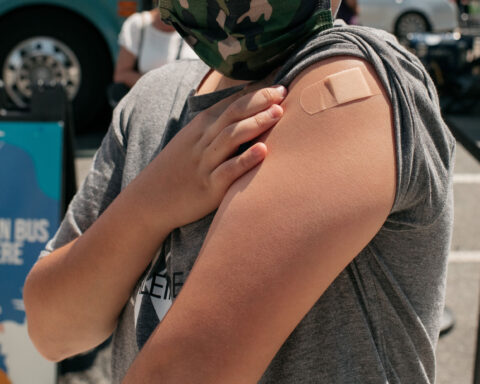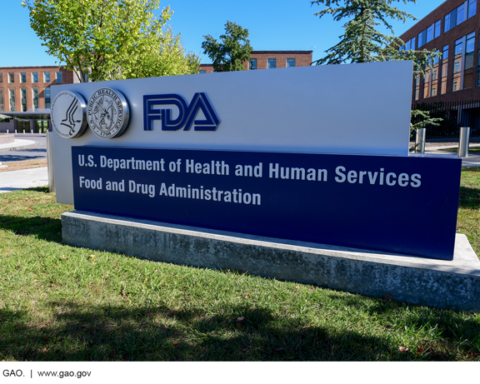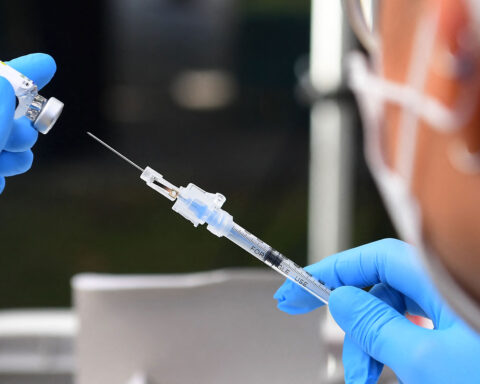The US Food and Drug Administration is meeting Friday about Covid-19 vaccine boosters, but the long-awaited discussion may not yield an answer as to whether all vaccinated Americans will get a third dose, experts said.
“What I think we’re going to hear from the FDA advisory committee is a go-ahead to boost people over the age probably of 60 because that’s where the data is most solid,” CNN Medical Analyst Dr. Jonathan Reiner said. “The question is what does this mean for people who are younger, and do we need to start boosting them now?”
Three reports published Wednesday supporting the argument that people may need a booster dose of Pfizer’s Covid-19 vaccine over time are part of a batch of data that will be discussed by the FDA’s vaccine advisers as it considers a request by Pfizer to approve a third, booster dose for most people six months after they get their first two doses of vaccine.
But there isn’t unanimity right now. On Monday, a group of international vaccine experts, including some from the FDA and the World Health Organization, wrote in the Lancet that current evidence does not appear to support a need for booster shots in the general public right now.
“Typically, we have a pretty good idea of how (these meetings) are going to go ahead of time,” CNN Chief Medical Correspondent Sanjay Gupta said Thursday. “I gotta say, I’m not so sure on this one.”
The outstanding questions, Gupta noted, included: Is immunity waning? How severe are breakthrough infections? How long does the booster effect last? And how much do boosters reduce transmission?
The questions are impacted by where the US stands in the pandemic.
The proportion of the population that is fully vaccinated — now at around 54.2% of the entire population — is still far below where experts have said it needs to be to slow or stop the spread, and cases have been on the rise.
The advisers will be looking at the data to balance safety and efficacy with the rise in infection and severe illness the US is facing, Reiner said.
“We want them to do this, we welcome this. But my guess is we’re not going to hear sort of a blanket opening of boosters for the entire population,” Reiner said.
Disparity in the Covid-19 pandemic
The pandemic has impacted different populations differently, and people of color are bearing a heavy burden, according to new research.
Black people, those over 40 and people with pre-existing conditions were the most likely sufferers of long Covid symptoms, which impacted a third of the Covid-19 patients, according to a study by the Long Beach department of Health and Human Services in California.
The most common extended symptom was fatigue, followed by loss of taste and loss of smell, the team reported in the US Centers for Disease Control and Prevention’s weekly Morbidity and Mortality Weekly Report.
“The odds of experiencing symptoms 2 months after a positive SARS-CoV-2 test result were significantly higher among females, persons with at least one preexisting condition, and those aged 40–54 years,” they wrote.
Black people had higher rates of difficulty breathing, joint pain, and muscle pain than other racial and ethnic groups. These results show a need to monitor demographic disparities in extended Covid-19 symptoms, the researchers said.
And an analysis published Thursday by the Kaiser Family Foundation found that the race-based disparities among children mirrored those among adults.
Compared to White children, kids of color have had more cases, deaths, and have had more mental health and academic problems related to the pandemic. While the most vulnerable, they’re also less likely to be vaccinated, according to the analysis.
While Covid-19 hospitalization and death are rare among children compared to adults, those kids who were hospitalized were more likely to be Black and Hispanic. Black and Hispanic kids were also more likely to have a Covid-19-related condition called MIS-C — multisystem inflammatory syndrome in children — and Black children were more likely to be admitted to intensive care for it.
Black, Hispanic, American Indian and Alaska Native children were more likely to die from Covid-19 than White children.
“Because children make up a significant share of the population and are more racially diverse than the rest of the population, equitable vaccination among this group is key for achieving an overall high rate of vaccine coverage among the population and may help to reduce disparities in vaccination rates more broadly,” the report said.
Masks help block airborne transmission, study shows
Meanwhile, new research published this week indicates the Alpha variant of coronavirus spread more easily as people breathed or spoke but showed that even the simplest masks can greatly reduce transmission.
“Our latest study provides further evidence of the importance of airborne transmission,” said Dr. Don Milton, professor of environmental health at the University of Maryland School of Public Health, who worked on the study.
The intensive study, conducted at the University of Maryland, the Walter Reed Army Institute of Research and elsewhere, showed people expel virus in their breath and saliva — findings that support the now widely accepted idea that the virus is spread in droplets of all sizes that fall to surfaces or float in the air. They measured RNA, the genetic material most commonly used to detect virus.
Loose-fitting masks stopped about 50% of virus-laden particles from getting out, the team found.
Milton said they’re now testing to see what happens with the Delta or B.1.617.2 variant, which is far more transmissible than Alpha and which now accounts for virtually all infections in the US currently.
But the implications of the findings about Alpha are clear.
“SARS-CoV-2 is evolving toward more efficient aerosol generation and loose-fitting masks provide significant but only modest source control. Therefore, until vaccination rates are very high, continued layered controls and tight-fitting masks and respirators will be necessary,” the team wrote.
“We know that the Delta variant circulating now is even more contagious than the Alpha variant. Our research indicates that the variants just keep getting better at travelling through the air, so we must provide better ventilation and wear tight-fitting masks, in addition to vaccination, to help stop spread of the virus,” Milton said in a statement.





